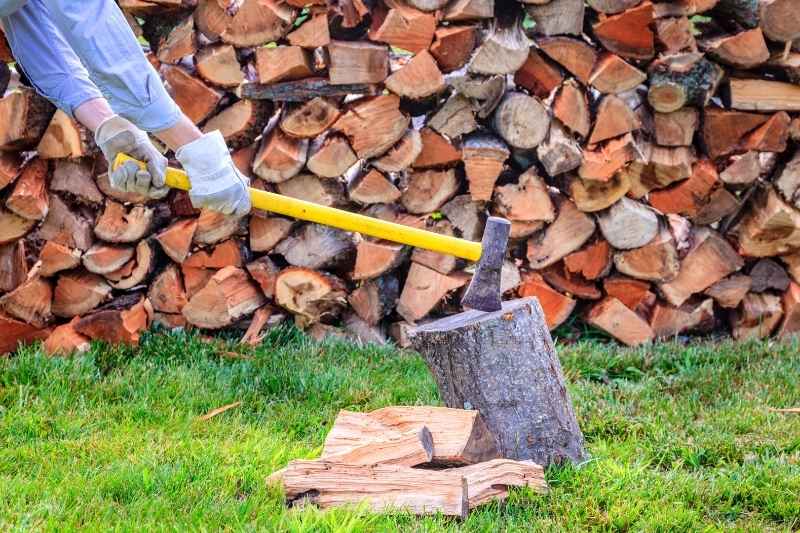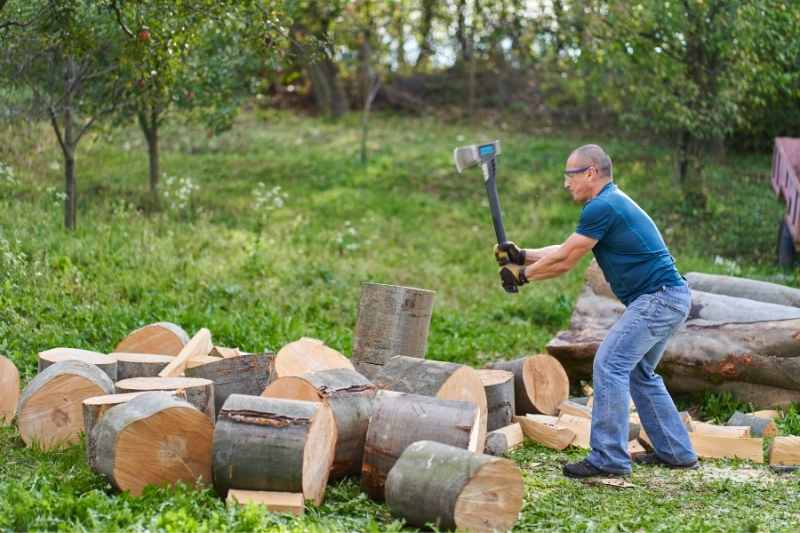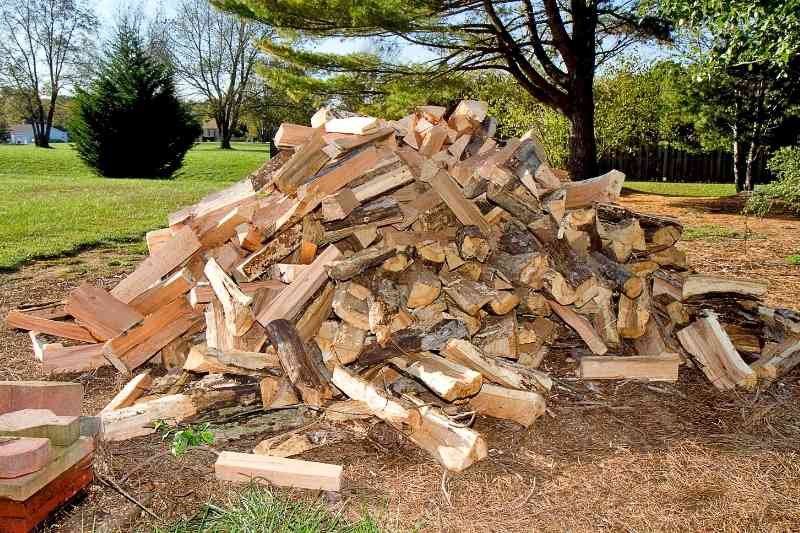Splitting wood is an important task for gardeners who wish to use their wood quickly and store it properly. Though often associated with physical effort and back pain, it can nevertheless be undertaken by moderately fit individuals, provided they use the right tools and techniques.
Discover how to split your wood correctly, as well as the necessary tools to achieve it.
Why split wood?
Splitting wood is a highly useful task that significantly reduces drying time and increases the heating efficiency of your wood, whether it's softwood (birch, willow, poplar...) or hardwood (oak, chestnut, beech...).
If you opt for a traditional woodpile, split wood takes up much less space than logs left whole.

When to split wood?
Generally, wood is split after felling, once the logs have been cut to the desired length.
Depending on when the tree is cut, the wood will contain more or less water. A tree felled in winter will always be drier than one cut during the growing season when it is full of sap. Your drying time will therefore be longer.
What are the essential tools?
In terms of equipment, you'll need to distinguish between cutting tools and safety gear.
For protection, you'll need:
- A pair of gloves
- Safety goggles
- A pair of safety boots
For splitting tools, you'll be spoilt for choice:
- A splitting axe (also called a 'maul')
- A hatchet
- A splitting wedge
- A sledgehammer
- A sturdy base to absorb blade impacts (a straight stump, a rubber mat on a stable surface...)
- A billhook for stubborn fibres
Find all the tools you need in our online shop: Axes, mauls, wedges.

How to split wood?
Preparation
Before getting down to business, you must properly prepare your work area. It should be flat, stable, and include a tree stump (log), for example, to absorb impacts and avoid damaging your blade edges. A short grass meadow as a surface will absorb shocks well and reduce arm vibrations.
Splitting tools like mauls come in various weights. Choose one that matches your strength to avoid injury or unnecessary fatigue.
Next, check the edge of your maul or hatchet. It doesn't need to be as sharp as a felling axe but shouldn't be completely blunt either. We advise against using an axe designed for cutting rather than splitting wood. Mauls are heavy-bladed tools with spurs on the sides to help penetrate the wood. The weight of the tool's head is designed to reduce fatigue and make splitting easier.

The maul, the essential tool!
In practice
The method and tools used will depend on the log's diameter.
A hatchet or a simple maul will suffice in the vast majority of cases. However, for logs over 50 cm in diameter, you'll also need a splitting wedge and a sledgehammer to get the job done.
Before splitting, identify any natural cracks in the wood to make the task easier. Also, pay attention to any knots, as they can complicate the process by trapping your tools.
First case: splitting small/medium-sized logs
This is the simplest scenario. Bend your knees, place your leading leg forward, and keep your back straight. Hold the handle either at the very end (more precise but tiring) or halfway (less tiring but less precise). Place the log on its flattest side and aim for a crack or simply the centre. Strike firmly. Clear your work area properly before continuing.

Second case: splitting large logs (>50 cm diameter)
The posture remains the same as above, but the method differs.
- If the log is large in both diameter and length
Use a splitting wedge along with a sledgehammer and, if needed, a billhook for stubborn fibres.
Place your first wedge at an angle at one end of the log, aligning the blade with the wood grain. After striking it once or twice, the wood will begin to split, allowing you to insert a second (or even third) wedge along the opening. The log will then split along its length. Use a billhook for any remaining fibres. You can also use it to move wood without straining your back!
- For a large-diameter but short log
Use either a maul or a sledgehammer with a wedge, but with a more complex method than for smaller logs:
Despite the temptation, avoid starting in the centre (even if there's a crack) and instead work from the outside, splitting "slice by slice." Starting in the centre risks trapping your wedge or maul (or both!) in the wood.
Begin at the outer edge, working in sections. After several strikes with the sledgehammer or maul, a slice will come free. You can then cut your logs by striking the slice perpendicularly with your maul. This method is quick and energy-efficient if done correctly.
Remember, the curved blade of your maul allows you to lift logs without bending—spare your back!

All that's left is to store your wood!































Comments